Fenceless garden bursting with texture and colour lights up Hawthorn East
This Melbourne home in Hawthorn East matches bold architecture and plant-rich design. Why not share it with the neighbourhood?
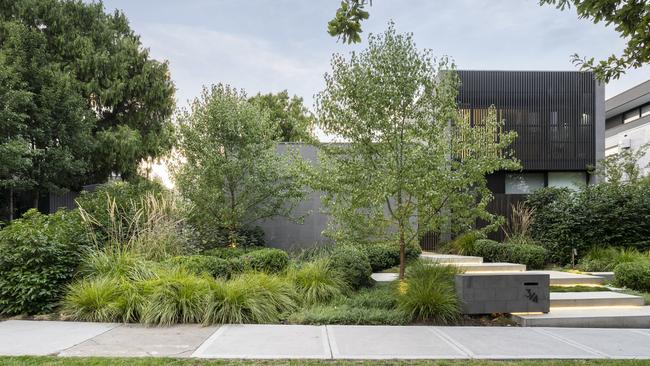
In a street of houses with high fences, this property in Melbourne’s Hawthorn East opens its arms to the outside world. It’s an innovative landscape design that has earned a shortlisting in the 2023 Houses Awards in the Gardens category.
The owners, a professional couple with young children, wanted to feel connected to their neighbours and community, and they love to garden. The plant-rich design by landscape architect Bethany Williamson bursts forth towards the street with foliage, textures and seasonal colour. “The garden attracts many people who stop, look and talk about the plants as they change throughout the seasons,” Williamson says. “It’s a way to encourage conversation and spark joy.”
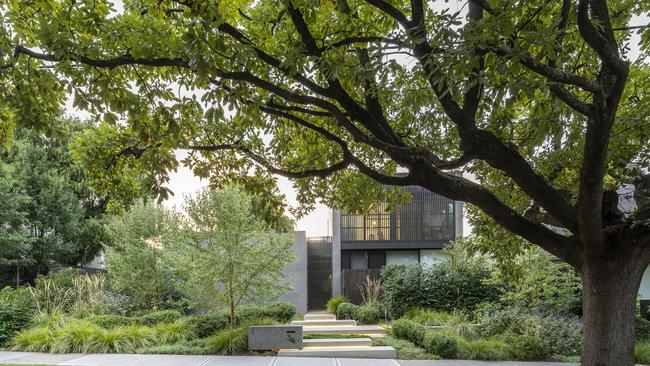
With no front fence or front lawn, there was plenty of space for plants and the generous entry path of floating concrete platforms. “That was an important design component,” Williamson explains. “Because we had such a wide street frontage we decided to elongate these steps so it felt more in scale with the height of the house and the width of the block.” No-mow grass (Zoysia tenuifolia) softens the gap between the steps.
The home’s bold architecture was integral to the context of the garden, according to Williamson, who was brought in before construction began on the vacant block. “The house sits tall on the street, clad with bluestone, so our main aim was to soften it with plants as much as possible. We wanted to play with some evergreen forms to give some life and interest to the planting, such as the lightly clipped Japanese box [Buxus microphylla “Japonica”] that snakes across and through the garden. Popping up throughout the year are some different perennials in purple and rusty orange,” she says. These include purpletop vervain (Verbena bonariensis), Agastache “Blue Boa”, and sweeps of Achillea “Antique Parchment” with feather reed grass (Calamagrostis “Karl Foerster”) for its waving seed heads. Adding touches of silver foliage are native Coleus argentatus and snow pears (Pyrus nivalis).
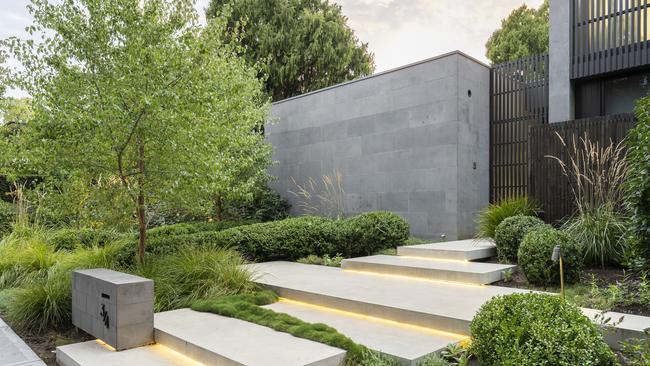
In contrast to the front garden’s open connection with the community, the rear garden is a private and serene space for relaxing with family and friends. Because of its modest size, the design needed to work hard to fulfil the clients’ brief. The sloping site required a large cut to accommodate the pool and entertaining area, so the off-form concrete bench for the barbecue and pizza oven doubles as a retaining wall. Matching the moody colour palette of the house, the selected plants include purple-leafed Cercis “Forest Pansy” as a feature tree, hedges of Portuguese laurel (Prunus lusitanica) and mounds of Coleus “Nico”. “It has a combination of clipped forms of Japanese box and loose planting similar to that used in the front garden, to provide some continuity. It gives structure with a bit of softness at the same time,” Williamson says.
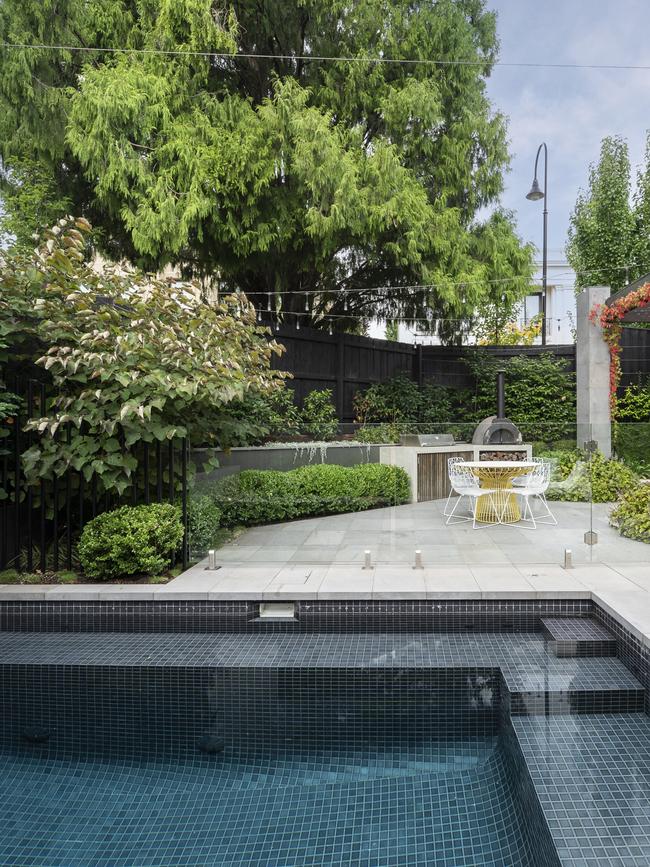
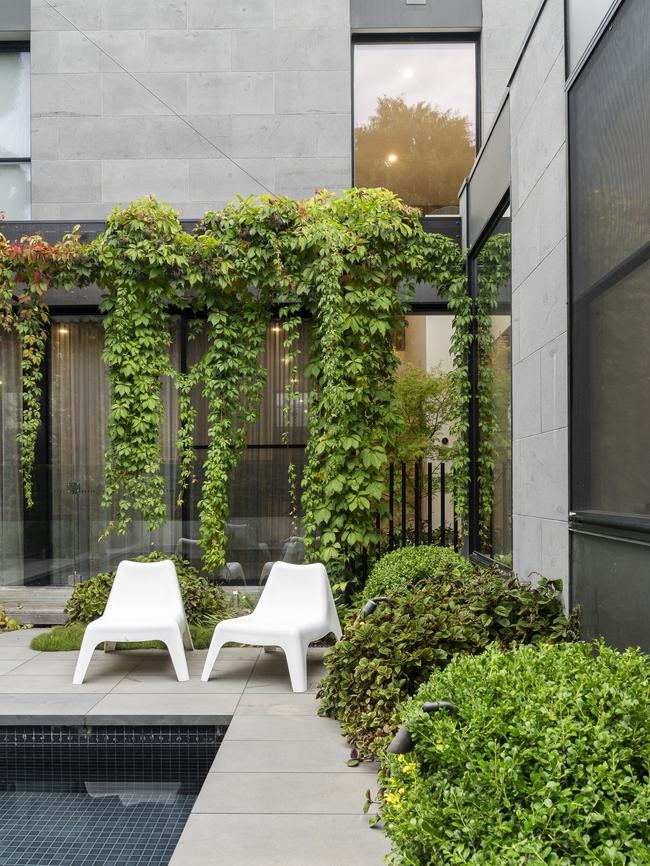
Virginia creeper (Parthenocissus quinquefolia) has clothed the timber pergola in the three years since the garden was completed, hanging as a green curtain that develops beautiful autumn colours. The clients love what they describe as the lush and tropical feel it gives the garden in summer. “We’ll start to trim it now as we don’t want to block the light inside completely,” says Williamson. “Soon it will make its way along the wires across to the other side of the garden so the whole space will have this overhead coverage of beautiful draping vines.”
The owners are thrilled. “The garden has been one of the most unexpected pleasures of our home,” they say. “We look out onto the back yard everyday – it’s perfect for kids to swim, for barbecues and sitting by the pool for a drink.”
Q&A
What native shrubs and groundcovers can we plant on top of our new gravity-fed grey water system?
Phyllis Price, Boyup Brook, WA
Grey water quality depends on what household products you use. Choose biodegradable, low salt, low phosphorus products to minimise impact on the soil and its biota. Keep adding organic matter to the soil to buffer the additional salts and alkalinity, and alternate grey water with fresh or rainfall. As a guide, avoid phosphorus-sensitive natives in the Proteacea family such as banksias, grevilleas and hakeas, but most other local natives should be fine. The WA Greywater Guide is at gwig.org.

What plants aren’t eaten by native animals such as pademelons? So far, only my diosma and lavender have survived.
Ian Stewart, Hobart
Wallabies and pademelons eat most plants when hungry but prefer new growth. Protect young plants with wire cages; complete exclusion fencing might be necessary. Look for plants with leaves that are strong smelling, spiny or furry. Some more resistant native species include Leptospermum, Coprosma quadrifida, Philotheca, Prostanthera, Dianella, Acacia, Banksia, Baeckea and white flag iris (Diplarrena). Exotics claimed to be unpalatable include Choisya ternata, Echium, foxglove, daffodil, lavender and wormwood.
Will unripe passionfruit on my vine ripen over winter, or should I pick them to ripen inside?
Megan Salisbury, Brisbane
Passionfruit develop their intense flavour and sweetness in the last few days of ripening. They should be full coloured, drop off, or pull easily off the vine. Green fruit won’t ripen once picked; purple fruit can get sweeter a few days after picking. Proximity to bananas will speed ripening.
Send your questions to: helenyoungtwig@gmail.com. The best question for June wins a superb Crystal Rain Gauge worth $120. May’s wubber is Gary Waldron of Broome for his question about propagating frangipanis.





To join the conversation, please log in. Don't have an account? Register
Join the conversation, you are commenting as Logout